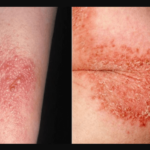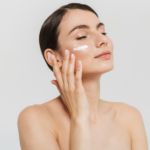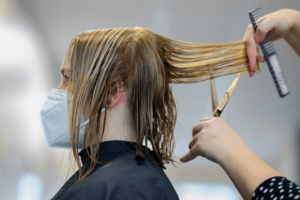Our skin is the first line of defense against harsh environments. For this reason, it’s very prone to damage and injury. Fortunately, like other organs, our skin can repair itself.
Even without any injuries, the skin continuously heals and regenerates itself. One question you might ask is how long does it take for skin to regenerate?
Generally, the skin regenerates itself approximately every 27 days without any external injury. During this process, the skin sheds dead cells and regenerates new skin cells. Some factors can also affect skin regeneration time. For young people, the process is faster, while it becomes slower as we age.
Skin injuries like burns and deep cuts may take the skin longer to regenerate. Regardless of injuries, it is possible for us to help our skin speed up the regeneration process. One way to speed up the skin regeneration process is to exfoliate the skin on a regular basis.
Let’s go over the details and see how the skin regenerates itself, and learn how often skin cells are replaced.
I’ll also list some steps that you can take to help the skin repair itself, including how to do proper exfoliation that promotes skin regeneration.
Also, for an excellent facial cleansing brush, take a look at our top pick, the FOREO Portable Personalized Cleansing Brush Combination Skin:
Click here to see it on Amazon.
How Long Does It Take for Skin to Regenerate?
The skin is the largest organ in our body, and it’s constantly in contact with harsh external environments. Like other organs, it can repair itself. Fortunately, human skin is one of the most remarkable organs when it comes to regeneration. Our skin regenerates faster when compared to other organs.
It takes an average of 27 days for the skin to regenerate. For some individuals, it can take upwards of 4-6 weeks for the skin to heal and regenerate. Several factors affect the needed time for the skin to regrow. These factors include:
1. Type of Injury
The skin regenerates itself regardless if there’s an injury or not. Constant exposure to the sun’s rays and harmful elements can damage the skin. However, when the damage is caused by an injury, the healing process can take much longer. The healing time also depends on how deep the injury is and the type of injury.
The skin has three layers: hypodermis (lowest), dermis (middle), and epidermis (top layer). The time needed for skin regeneration usually depends on how deep the injury reached the layers of the skin.
For minor scratches on the epidermis, the regeneration time would be relatively fast. These scratches can take a few days to a week to completely heal. Meanwhile, deeper cuts and burns can take weeks before the skin can fully repair itself. So, the deeper the affected area is, the longer it takes for the skin to regenerate.
2. Age
As we age, our bodies’ healing processes tend to slow down, including skin regeneration. The skin also constantly changes. The skin that we had when we were kids is different from our skin as adults. Here are the differences between the skins of different age groups:
- Newborn to Baby Skin (0-3 years old) – The skin is most delicate during the infant years. During these times, the skin is thinner and more sensitive. In spite of being delicate, the truth is, baby skin regenerates faster than adult skin.
- Children’s Skin (4 years old – Pre-teen Years) – During these years, the skin starts to mature. The layers of the skin become thicker. However, it is still more sensitive than adults’ skin. Like infants’ skin, their skin regeneration time is also fast.
- Puberty Years – During puberty, the skin rapidly develops to prepare for adulthood. The skin becomes tougher and more resilient. During these years, the skin becomes very active, producing necessary hormones and oils. Teenagers require specific skincare to suit their skin’s growing needs. At this stage, the skin still regenerates relatively faster than adults.
- Adulthood to Senior Years – By the time puberty has passed, the skin has everything it needs to protect the body. During this time, skin regeneration becomes slower. Some may notice signs of aging, including decreased skin regeneration, as early as 25. The skin also loses elasticity, becomes drier, and produces fewer oils and hormones to repair the skin.
3. Our Immune System
Our immune system is a critical factor in the health of our skin. Cells of the immune system take part in the actual reparative process of the skin. People with immune systems that don’t function properly may experience slower skin regeneration and wound healing.
4. Certain Medical Conditions
Aside from problems with the immune system, certain medical conditions can also cause slower skin regeneration. Stress, diabetes, and obesity are some conditions that contribute to slower skin healing. Poor nutrition, smoking, and obesity can also negatively affect skin healing.

How Does the Skin Regenerate?
The skin is not just the biggest organ, but it is also one of the most complex organs in the body. Similarly, skin regeneration is also a complex process. To understand better, we’ll look at the three layers of the skin during skin regeneration.
Epidermis
The skin has three layers, and the epidermis is the outermost one. The deepest part of the epidermis is called the stratum basale. The stratum basale continuously produces new skin cells, which move outward as it multiplies in number.
The new skin cells continue to multiply and move upward until it replaces damaged areas of the epidermis. Even without injury, these new skin cells constantly replace old skin cells. For this reason, we are constantly shedding skin and replacing it with new cells.
Dermis
The dermis is the second layer of the skin. This layer of the skin is mostly composed of collagen and elastin. Sweat glands, nerves, and capillaries are present in this layer.
Skin regeneration of injuries reaching the dermis is more complex. The skin uses cells, which are called fibroblasts, that preserve healthy skin cells and isolate them from injury.
As they are being moved to the edges of the affected area, the cells produce collagen and elastin, replacing the damaged dermis. Meanwhile, a type of white blood cell called macrophages destroys any waste material in the damaged area.
Hypodermis
The hypodermis is the innermost part of the skin. It is mostly composed of fat, water, collagen, and connective tissues. This part of the skin acts as a minor shock absorber.
This layer is also where vitamin D is produced when our skin is exposed to sunlight. Within this layer, blood vessels, sweat glands, and hair follicles can be found. The regeneration process within this layer is similar to dermal skin regeneration.
How to Promote Skin Regeneration?
Skin regeneration is a natural process. However, you can take some steps to increase how fast your skin regenerates itself. The following are some of the things we can do to support healthy skin regeneration:
1. Eat Right and Take Some Vitamins
The vitamins and minerals that we get from what we eat help promote faster skin regeneration. Vitamin intake through supplements and dermatological products is effective as well. Here are some of the best vitamins you can take for healthier skin:
- Vitamin A – This vitamin promotes the production of collagen, which is a key protein for skin regeneration. It also heals the skin and soothes infections. Green, leafy vegetables, yellow vegetables, red fruits, and fish are good sources of vitamin A.
- Vitamin C – Similar to vitamin A, vitamin C is also required to produce collagen. It is also a potent antioxidant that slows down the aging process. Foods rich in vitamin C are citrus fruits and leafy vegetables. Guavas, strawberries, peppers, broccoli, and mangoes are excellent sources of vitamin C.
- Zinc – Zinc is another important vitamin for skin regeneration. Not only does it promote collagen production, but it also keeps our immune system strong. Chicken, seafood, grains, nuts, and seeds are good sources of Zinc.
2. Get Enough Sleep
Many people underestimate the power of sleep when it comes to skin regeneration. Many experiments show that having enough sleep slightly outweighs better nutrition when it comes to skin regeneration speed.
When we sleep, our body produces cells and hormones required for body repair. There is plenty of evidence, which shows that cell production is at its peak during nighttime.
3. Use Prescribed Products
Skin experts also have developed different products that aid and promote skin regeneration. These products are often infused with vitamins and collagen to accelerate skin repair. These products can range from cleansers, serums, creams.
4. Exfoliation
Exfoliation also helps promote skin regeneration. Exfoliation involves getting rid of the dead skin cells using chemical exfoliants or physical exfoliant tools. Removing dead skin cells using these products helps give way to new skin cells.
Exfoliation can also stimulate collagen and elastin production. By regularly exfoliating your skin, you also will help the skin absorb topical applications more efficiently and effectively.
Try the LUXAMAX AVA | 3-in-1 Smart Facial Cleansing Brush & Anti-Aging Massager Spa Device . With this device, you can experience the combined benefits of cleansing, anti-aging, and facial massage.
Click here to see it on Amazon.
How to Exfoliate to Encourage Skin Regeneration?
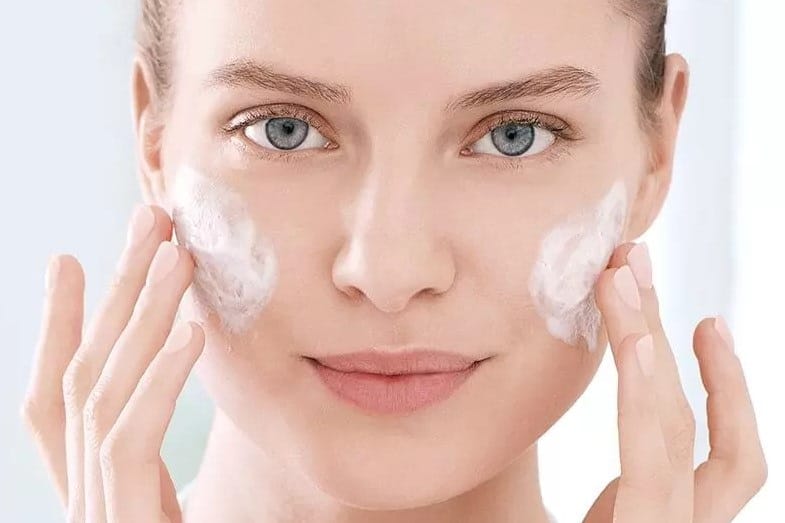
Exfoliation is very effective in promoting skin regeneration. However, there are things you should consider when exfoliating the skin. Whether you’ll be using chemical exfoliants or physical exfoliating tools, you should consider the following:
1. What to Use
Several exfoliation methods are available, including chemical exfoliants and physical exfoliation tools such as brushes and scrubs. Many use sugar and salt scrubs infused with natural oils to slough off dead skin cells.
Some may use chemical peels with alpha-hydroxy acids (AHAs) and beta-hydroxy acids (BHAs). These acids help loosen the connection between the skin and the dead cells. There are also specially designed serums and toners packed with these acids.
Try the Olga Lorencin Lactic Acid Hydrating Serum for healthier and younger skin. It uses active lactic acid to exfoliate the skin and reduce lines and wrinkles.
Click here to see it on Amazon.
Regular use of this serum will help encourage and speed up the time it takes for your skin to regenerate, leaving you with newer, fresher, more youthful-looking skin.
2. Frequency of Exfoliation
Considering how often you will exfoliate your skin is very important. Over-exfoliation can cause harm to the skin, including irritation, inflammation, and accelerated aging. Dryness, redness, and sensitivity are also signs that you are exfoliating too much. For the best and safest result, dermatologists advise exfoliating only once or twice a week, especially if you have sensitive skin.
3. Target Area
In choosing how to exfoliate or what to use, you have to consider which area you’re exfoliating. For example, our face has thinner and more sensitive skin than other parts of our body. For this reason, perhaps try out gentler exfoliating products. Other body parts, where the skin is thicker, can stand aggressive exfoliating products.
Remember that certain parts of our body, especially the face, are more delicate than others. We can choose whatever tool or product we would use to exfoliate.
It all comes down to our preferences and unique skin type. Lastly, avoid over-exfoliation as it may do more harm than good. If you see signs of over-exfoliation, such as redness, irritation, and dryness, immediately stop and consult an expert if necessary.
If you overdo it, you can lengthen the time it takes for your skin to regenerate – longer than the normal 27 days, which will leave the skin looking older, more wrinkled, drier, and lose its color.
Try the Crepe Erase TruFirm Complex Body Repair Treatment. The Body Polish has lactic acid and rice bran to polish and buff the skin. The Body Repair Treatment promotes collagen and elastin production to produce younger and more radiant skin.
Click here to see it on Amazon.
Conclusion: How Long Does It Take for Skin to Regenerate?
The skin is a fascinating body organ. It continuously repairs and heals itself. How long does it take for the skin to regenerate? On average, the skin regenerates approximately every 27 days, fully replacing old skin cells.
However, skin damage caused by chemical hazards or mechanical injuries would take longer to heal. The deeper the damage, the longer it takes to heal.
Fortunately, there are so many ways to help our skin heal faster. Eating a healthy diet, taking vitamins, and boosting our immune system are some ways to promote skin regeneration.
Using dermatologically tested products can also improve skin healing and makes the skin healthy and glowing at the same time.
Regular exfoliation can also help us achieve that radiant and youthful glow by removing dead cells and encouraging the production of new skin cells. However, remember not to over-exfoliate and stop as soon as irritation and dryness show.
By doing so, you can help your skin regenerate faster, revealing younger and more radiant skin.
Related reading:
How Long After Quitting Smoking Does Skin Improve?
How Long Does It Take to Shed Your Skin?
How Does Your Body Make New Skin?





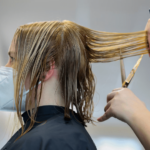
![Neutral Skin Tone Defined [and Best Colors for Neutral Skin] neutral skin tone](https://skincaregeeks.com/wp-content/uploads/2021/05/neutral-skin-tone-150x150.png)

